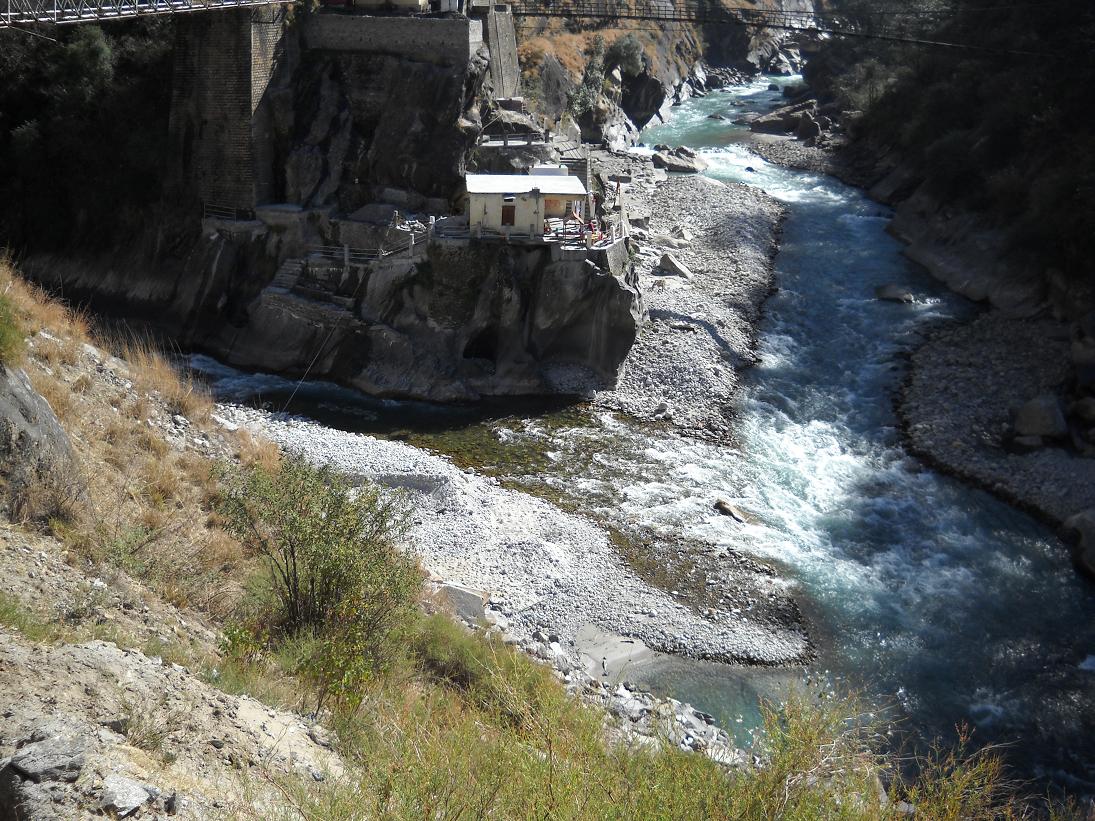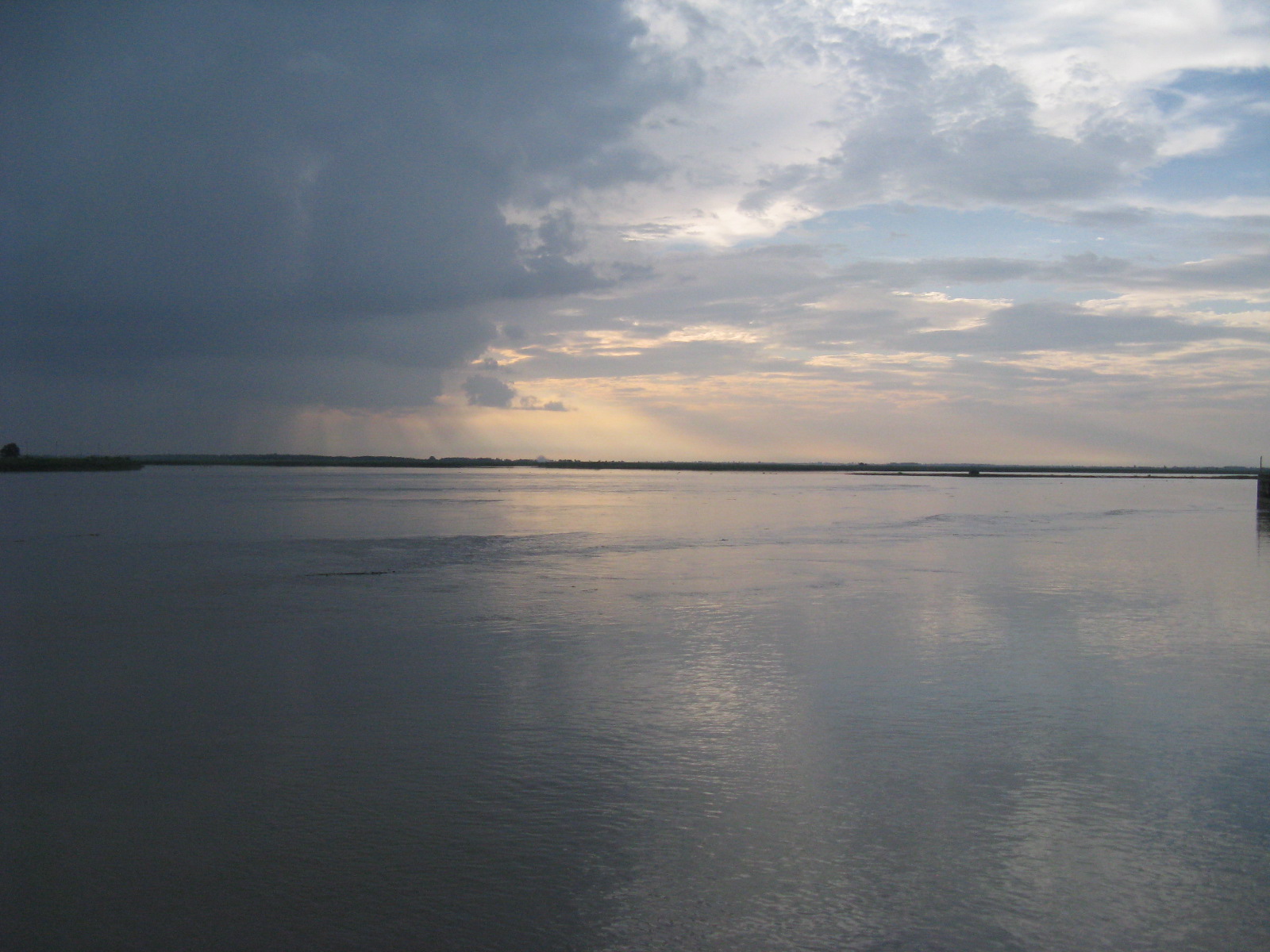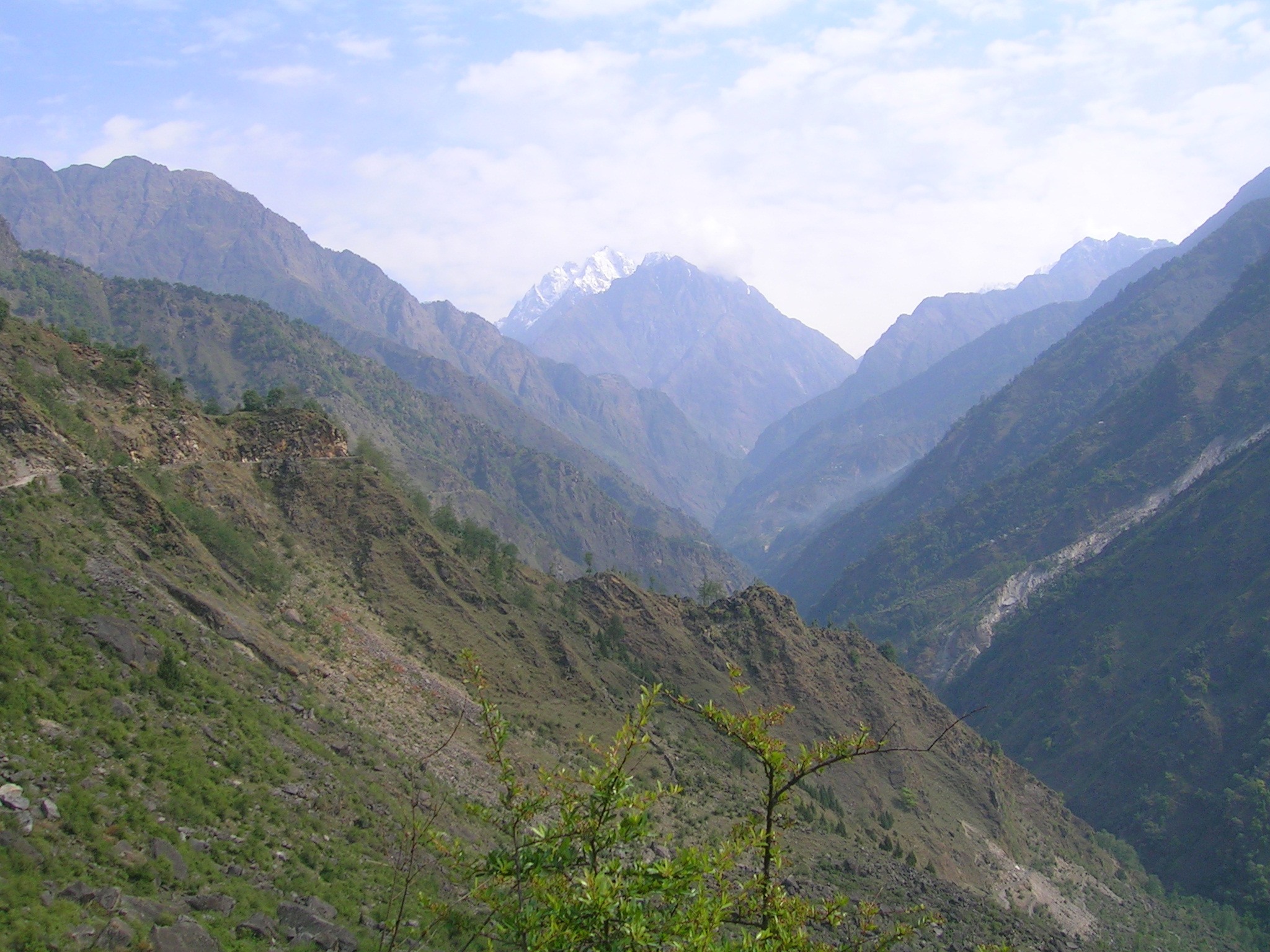|
Deo Damla
Deo Damla is a mountain of the Garhwal Himalaya in Uttarakhand, India. It is situated in the eastern rim of Nanda Devi Sanctuary on the Drainage divide, watershed of Milam Glacier and Nanda Devi basin. The elevation of Deo Damla is and its prominence is . It is 63rd highest located entirely within the Uttrakhand. Nanda Devi, is the highest mountain in this category. It lies 1.8 km SSE of Mangraon . Its nearest higher neighbor Rishi Pahar lies 8.3 km NNW and it is 10.6 km SSW of Nanda Devi . It lies 1.4 km north of Bamchu . Climbing history It was first climbed by Eric Shipton and two sherpa's Ang Tharkay and Ang Dawa in 1936 during Osmaston–Shipton 1936 expedition, as members of Major Osmaston's party which went into the Nanda Devi region under the orders of the Surveyor-General in 1936. They climbed a peak on the watershed overlooking the Milam glacier and camped at about in a subsidiary valley. On 23 September they started before dawn to climb up a ste ... [...More Info...] [...Related Items...] OR: [Wikipedia] [Google] [Baidu] |
Garhwal Himalaya
The Garhwal Himalayas are mountain ranges located in the Indian state of Uttarakhand. Geology This range is also a part of Himalaya Sivalik Hills, the outer most hills of the Himalaya located in Himachal Pradesh and Uttarakhand. Major peaks of Garhwal Himalayas * Nanda Devi *Kamet *Sunanda Devi *Abi Gamin *Mana peak * Mukut parbat * Demographics The cities which are included in these ranges are Pauri, Tehri, Uttarkashi, Rudraprayag, Chamoli, and Chota Char Dham pilgrimage namely Gangotri, Yamunotri, Badrinath and Kedarnath. Some of the beautiful sites of the location are the hill stations of Mussoorie, Dhanaulti, Auli, Chakrata, Chopta, UNESCO World Heritage Site, Nanda Devi and Valley of Flowers National Parks is also located in Garhwal Himalaya. See also * Garhwal division * List of mountain peaks of Uttarakhand * Himalayas The Himalayas, or Himalaya (; ; ), is a mountain range in Asia, separating the plains of the Indian subcontinent from the Tibetan Plate ... [...More Info...] [...Related Items...] OR: [Wikipedia] [Google] [Baidu] |
Rishi Kot
Rishi Kot is a mountain of the Garhwal Himalaya in Uttarakhand India. Rishi Kot means “the Rishis’ fortress”. The elevation of Rishi Kot is and its prominence is . It is 134th joint highest located entirely within the Uttrakhand. Nanda Devi, is the highest mountain in this category. It lies 5.7 km SW of Changabang its nearest higher neighbor and 7.1 km south of Dunagiri . Bethartoli lies 13.4 km SW and 11.7 km SSE lies Nanda Devi . Climbing history In 1968 N.D.A. Khadakvasla venture in to the Nanda Devi Sanctuary in Kumaon Himalaya. Led by Ft. Lt. V.P. Singh. They climbed three different peaks in the Rhamani Glacier. One of them is Rishi Kot climbed by the third party led by Lt. Mohindra the other members in the team are Nanda, Bhasin, Randhawa, Roy, Sherpa Instructor Pasang Temba, Sherpa Mingma Wangdi and four porters they summits on June 14. The three peaks were named Dl, D2 and D3 by the expedition team D3 is already marked on the Survey of I ... [...More Info...] [...Related Items...] OR: [Wikipedia] [Google] [Baidu] |
Ganga
The Ganges ( ) (in India: Ganga ( ); in Bangladesh: Padma ( )). "The Ganges Basin, known in India as the Ganga and in Bangladesh as the Padma, is an international river to which India, Bangladesh, Nepal and China are the riparian states." is a trans-boundary river of Asia which flows through India and Bangladesh. The river rises in the western Himalayas in the Indian state of Uttarakhand. It flows south and east through the Gangetic plain of North India, receiving the right-bank tributary, the Yamuna, which also rises in the western Indian Himalayas, and several left-bank tributaries from Nepal that account for the bulk of its flow. In West Bengal state, India, a feeder canal taking off from its right bank diverts 50% of its flow southwards, artificially connecting it to the Hooghly river. The Ganges continues into Bangladesh, its name changing to the Padma. It is then joined by the Jamuna, the lower stream of the Brahmaputra, and eventually the Meghna, forming the major est ... [...More Info...] [...Related Items...] OR: [Wikipedia] [Google] [Baidu] |
Alaknanda River
The Alaknanda is a Himalayan river in the Indian state of Uttarakhand and one of the two headstreams of the Ganges, the major river of Northern India and the holy river of Hinduism. In hydrology, the Alaknanda is considered the source stream of the Ganges on account of its greater length and discharge; however, in Hindu tradition and culture, the other headstream, the Bhagirathi, is considered the source stream. Course The Alaknanda rises at the confluence and foot of the Satopanth and Bhagirath Kharak glaciers in Uttarakhand. From its origin, it travels to the village of Mana, meets with the Saraswati River, a right bank tributary, and continues downstream through narrow valleys. It reaches the Badrinath valley, arrives at Hanumanchatti, and meets with the Ghrit Ganga, a right bank tributary. From Hanumanchatti, the river goes to Pandukeshwar and flows through wide valleys and steep terrains. At Vishnuprayag it meets Dhauliganga, a left bank tributary, and travels west to th ... [...More Info...] [...Related Items...] OR: [Wikipedia] [Google] [Baidu] |
Vishnuprayag
Vishnuprayag is one of the Panch Prayag (five confluences) of Alaknanda River, and lies at the confluence of Alaknanda River and Dhauliganga River, in Chamoli district in the Indian state of Uttarakhand. Vishnuprayag derives its name from Vishnu, According to Hindu scriptures, it is the place where Sage Narada meditated, after which Vishnu appeared before him. It is near to Kagbhusandi Lake. Geography It is located at . Its original name is Vishnuprayāg. It has an average elevation of 1,372 metres. Path The Alaknanda River, which originates in the eastern slopes of the glacier fields of Chaukhamba, is joined by the Saraswati River near Mana village and then flows in front of the Badrinath temple. It then meets the Dhauli Ganga River, which originates from the Niti Pass, to form the Vishnuprayag. This stretch of the Alaknanda River is called the Vishnu Ganga. According to legend, the sage Narada offered worship to god Vishnu at this confluence. An octagonal shaped temple l ... [...More Info...] [...Related Items...] OR: [Wikipedia] [Google] [Baidu] |
Dhauliganga River
The Dhauliganga is a turbulent Himalayan river which rises in the border regions of India and China and flows south into the Garhwal region of Uttarakhand, India. It joins the Alaknanda, the major source stream of the Ganges river. Course Dhauliganga rises in the vicinity of the Niti Pass in the border regions between Garhwal and southwestern Tibet. It flows southwards until it meets the Rishiganga on its left bank at Rini, in the vicinity of Tapovan in Chamoli district. It then flows westwards until it meets the Alaknanda at Vishnuprayag and terminates—the confluence just upstream of the city of Joshimath. The upper Dhauliganga valley parts the East-West Himalayan axis, with Nanda Devi and its subsidiary peaks to its left and Kamet and its subsidiary peaks to its right. Nanda Devi glacier flood On 7 February 2021 a part of Nanda Devi Glacier, a Himalayan glacier in the Nanda Devi National Park, broke away and caused water levels in the Rishiganga and Dh ... [...More Info...] [...Related Items...] OR: [Wikipedia] [Google] [Baidu] |
Rishi Ganga
Rishiganga is a river in the Chamoli district, Uttarakhand, India. It springs from the Uttari Nanda Devi Glacier on the Nanda Devi mountain. It is also fed from the Dakshini Nanda Devi Glacier. Continuing through the Nanda Devi National Park, it flows into the Dhauliganga River near the village Rini. 2021 glacial outburst flood Starting approximately 10:45 a.m. IST on 7 February 2021, a flooding disaster occurred all along the river and its gorge following a landslide, avalanche or glacial lake outburst flood. Flash flood on February 7 in Chamoli district, Uttarakhand, claimed at least 72 lives with at least 200 missing. Now, Geological Survey of India (GSI) has submitted its report on causes of the disaster. Key findings: Flash flood was due to a large mass of snow, ice and rock avalanche along with a hanging mass of rock crashing into the Raunthi Garh valley floor. This impact pulverised the combination of rock, snow and ice causing a rapid flow downstream of R ... [...More Info...] [...Related Items...] OR: [Wikipedia] [Google] [Baidu] |
Jauljibi
Jauljibi is the small bazaar of Indo-Nepal border (Mahakali Zone) situated at the confluences of Kali and Gori Rivers. The name refers to bazaars on both sides of the river, with the Nepal-side bazaar being rather small compared to that on the Indian side. A suspension bridge on the Kali has joined the bazaars and the people of both countries for many years. The town is famous for its annual trade fair A fair (archaic: faire or fayre) is a gathering of people for a variety of entertainment or commercial activities. Fairs are typically temporary with scheduled times lasting from an afternoon to several weeks. Types Variations of fairs incl ..., popularly known as Jauljibi Mela. Thousands of people throng to Mela from the neighboring villages and districts. Uttarakhand {{Dadeldhura-geo-stub ... [...More Info...] [...Related Items...] OR: [Wikipedia] [Google] [Baidu] |
Sharda River
The Sharda River, also called Kali River and Mahakali River, originates at Kalapani in the Himalayas at an elevation of in the Pithoragarh district in Uttarakhand, India. It flows along Nepal's western border with India and has a basin area of . It joins Ghaghra River, a tributary of the Ganges. It takes the name Kali River from the union of the two streams at Gunji as it flows through the hills. After Brahmadev Mandi near Tanakpur, it enters the Terai plains, where it is called Sharda River. It offers potential for hydroelectric power generation. The river is also proposed as source for one of the many projects in the Himalayan component of the Indian Rivers Inter-link project. Etymology and naming It is named after Śāradā, which is another name for Saraswati, the goddess of learning. It is called Mahakali River in ne, महाकाली नदी, mahākālī nadī, , in Hindi, and Kali Gad (Kumaoni: काली गाड़, ''kālī gād'') or Kali Ganga in ... [...More Info...] [...Related Items...] OR: [Wikipedia] [Google] [Baidu] |
Goriganga River
Gori Ganga ( Kumaoni: ''Gori Gād'') is a river in the Munsiari tehsil of the Pithoragarh District, part of the state of Uttarakhand in northern India. Its principal source is the Milam Glacier, just northeast of Nanda Devi along with the Glaciers of the Ralam River, and the Pyunshani and Uttari & Dakshini Balati Glaciers that lie on the western face of the Panchachuli Peaks. Etymology In the local language "gori" means white or fair. "Gad" and "ganga" both mean river. The water of this river froths and contains white clay/sand, so it looks white most of the time. Course The alpine trans-humant village of Milam is located one kilometer below the snout of the glacier. Here a left-bank stream called ''Gonka'' joins the Gori. The valley provides the approach route for access to peaks such as Nanda Devi East, Hardeol, Trishuli, Panchchuli and Nanda Kot. The Gori is also fed by glaciers and streams flowing from the eastern slopes of the east wall of the Nanda Devi S ... [...More Info...] [...Related Items...] OR: [Wikipedia] [Google] [Baidu] |
.jpg)



